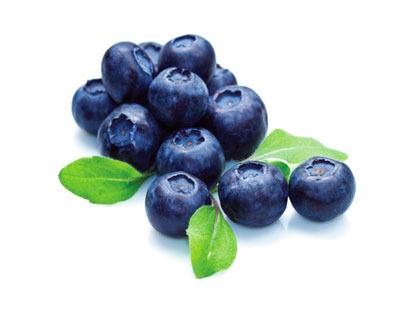Pruning is key to blueberry productivity. But it isn’t always easy to see what needs to be done. Understanding the typical growth pattern of a blueberry cane will help.
Blueberry bushes put on new canes each summer. The first year, the canes are green and grow straight and unbranched (these are the primary canes). Because blueberries fruit on 1-year-old wood, these new canes do not produce berries the first summer.
The next year the tips of these primary canes stop growing. They put on a few berries at the ends of the year-old wood but more importantly they develop side branches (which will produce next season and are much greater in number).
The next year, the side branches will put on a good number of berries and will develop secondary branches which will provide even more fruit the next year.
The process of branching and increased productivity will continue for about 2-3 years. After that, canes start to become thin and weak (sometimes called twiggy) and berry production wanes. Removal of old (non-producing) canes, however, encourages the bush to put on new canes which starts the cycle all over again.
The dormant season (winter) is the best time to prune blueberries because plant structure is more clearly seen and healing of wounds is better.
Before you begin pruning, study the bush. Imagine what the plant should look like when pruning is completed. Ultimately you want 8 to 12 well-placed canes of vary ages (none more than 5 years of age) radiating out from the center of the bush like the spokes on a bicycle. You want the bush to have an open center that allows sunlight to pass through and good air movement to discourage diseases. And you want the bush to have strong canes that can support fruit off the ground.
Start with the easiest cuts — those that don’t take much thought. Remove canes by cutting them all the way to the crown or to where a strong, newer side shoot arises.
Follow a systematic approach:
1. Remove all diseased and broken canes first.
2. Remove the low growth that will touch the ground when loaded with fruit.
3. Cut out weak shoots that develop from the base of the plant late in the season.
4. Remove branches that are touching and branches that head inward (into the open center).
5. Remove two or three older canes (6+ years).
6. Remove all but two or three new canes.
Older canes usually are more than 1 inch in diameter, covered with lichens and peeling bark, and are twiggy.
In deciding which new canes to keep, choose those that are at least a foot in length, about the diameter of a pencil and do not cross other canes or head back into the center of the bush.
Removal of two or three of the oldest canes and all but two or three of the new canes annually will promote more consistent productivity from year to year and renewal of the bush for the future. So out with the old and in with the new!
Jeanette Stehr-Green is a Washington State University-certified, Clallam County Master Gardener.



